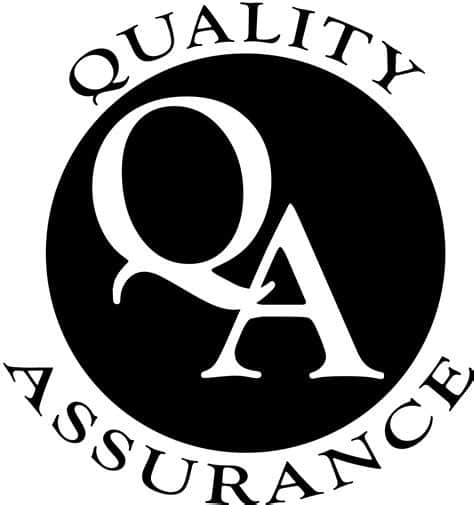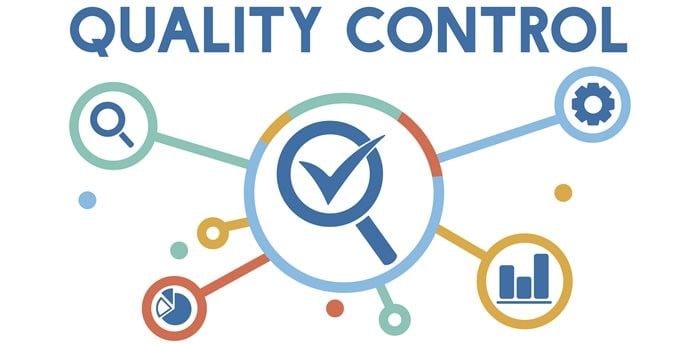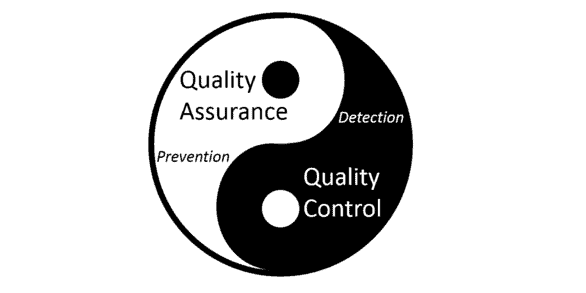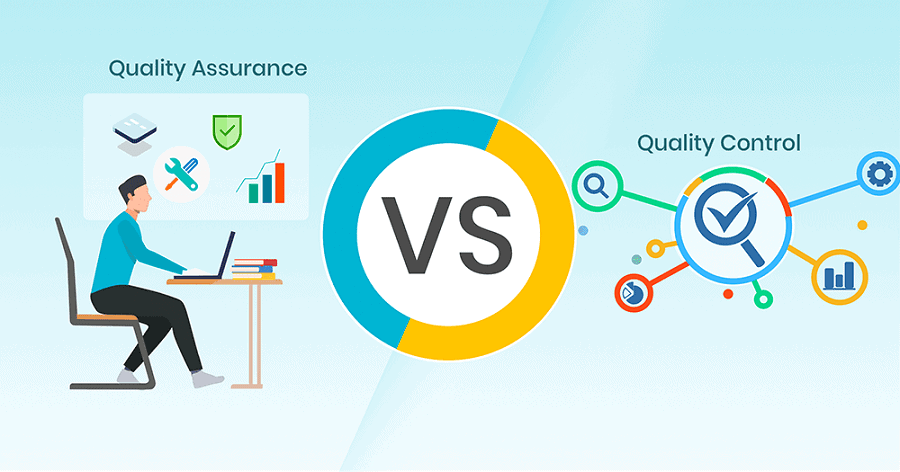Quality assurance and quality control are two fundamental parts of the inspection process. By most people, these terms are wrongly used because they are interrelated areas of quality management.
This article will tell you about their significant differences, why they are essential, and how organizations implement them. To find all about it, read this information till the end without skipping anything so that you can have a clear-cut idea about the whole process.
An organization is supposed to be on the same page when it comes to terms with the meanings of Quality Assurance and Quality Control. QA and QC are both a significant part of the organization’s quality management plan.
The productivity of delivery teams depends on the variations being well understood by all team members. If quality systems are applied effectively, then they can contribute widely to the success of organizational projects.
Still, the contradiction is that when team members don’t get them the right way, the quality systems are likely to be weak and unproductive. The delivered system must make sure the whole process runs smoothly. Things are delivered on time, built by the team within their budget, and fulfill customer needs.
What is Quality?
Quality is hard to explain, but we can define it as something suitable for usage or purpose. It is all about fulfilling the requirements and expectations of buyers who are cautious about the product’s functions, design, compatibility, durability, and price. In other words, we can say that the manufacturer is supposed to provide the best end product suitable for the users in every way possible, as it ensures the quality of the item.
What is Quality Assurance?
Quality assurance (QA) is any systematic planning of a product or service that completes specific needs. QA builds and maintains some requirements for creating or manufacturing trusted products.
The whole system is decided to enhance customer confidence and trust while also enhancing work processes and productivity. It allows an organization or brand to better compete with others. QA indicates the application of well-defined standard practices and methods.
This process is managed and planned at the managerial level and emphasizes the process checklists, methodology, standards, project audits, and development process. All the work here is done step by step and ends till the completion of the project.

What is Quality Control?
Quality control is the arrangement of measures and methods to follow that helps you ensure that the quality of a product is dealt with and improved against a set of standards and that any mistakes that pop up are either removed or decreased.
After fixing the issues in the test product, it is verified again to make sure that the functionalities and features are working as they should be planned. QC process ensures that the product being produced is of the demanded quality. Examples of quality control activities contain inspection, deliverable peer reviews, and the software testing process.
Quality control emphasizes ensuring that the item and manufacturing process comes up to the customer’s needs and fulfills their criteria. Quality control depends on the testing of products, as product inspection gives a clear-cut picture of the quality of the end product.

The History of Quality Assurance
The concept of quality assurance isn’t a new one, and society always looks forward to a better and more advanced version of things. For quality in products, the principles seen in modern quality assurance first came prominently with the association in the Middle Ages.
Guilds were created to build a quality standard planned by monarchs for different trades, including blacksmithing. Other guild masters would examine items to ensure the quality of the product. The time reign lasted till the 19th century, and then the Industrial Revolution came.
You can say that quality assurance is a work in progress, and societies worldwide are working on it for better results. In all spheres of life, it needs to be ensured that customers get the best product, so for the sake of that, the whole process remains in progress.
The History of Quality Control
Same as quality assurance, the need for quality control surfaced for the benefit of the consumer. In the Middle Ages, before the industrial revolution started, guilds were trained in their craft for a long time.
They were permitted to perfect their expertise and go for the high standards of quality set in place by their administration. To become masters of their craft, they must prove their skills and cement their reputations by creating a masterpiece showing their capabilities to build a quality product.
These methods helped ensure the quality of the products should be preserved, stay consistent, and always be modified. The sole purpose was to create the best of the best item designed by keeping in mind the standard guideline. There is no end to it as brands all over are constantly working for the benefit of user’s convenience.
Difference Between Quality Assurance and Quality Control
Following are the significant differences between QA and QC, so have a look and find out:
- The main objective of quality assurance is to reduce faults and mistakes in the target product. In contrast, quality control’s primary goal is to resolve the errors after identifying them in the test product.
- In QA, preventive techniques and proactive measures are being applied. As in QC, corrective procedures and reactive measures are implemented.
- The whole process of QA has oriented interlinks directly to the systematic and planned activities based on manufacturing the product. In QC, the product-oriented is interlinked to the operational activities and methods utilized to examine and make sure that requirements have been followed.
- QA deals with managing the quality of the item by defining the methods, strategies, policies, making checklists, and building standards required to be followed throughout the project. QC involves the planned instructions as the project moves forward and products are being made to ensure quality, discover flaws, and fix them.
- In QA, when statistical tools and methods are implemented to end products. They are indicated as Statistical Quality Control (SQC), and they become an internal part of the whole process. When statistical tools and techniques are applied in QC to the methods, they are called Statistical Process Control (SPC). They become a significant element of quality control.
- The procedures involved in QA include documentation, supplier management, personnel training, audits, change control, and design for investigation. The systems implemented in QC are batch inspection, product sampling, validation testing, and laboratory testing.
- The activities in quality assurance involve the whole team. All the team members of an organization are accountable for QA activities. QC is usually the liability of a particular person within the company. It follows the standards rules for quality control and files its findings depending on the standardized product testing process and validation process.
Quality Assurance as a Strategy of Prevention
QA emphasized planning, filing, and agreeing on a set of necessary instructions to ensure quality. Here planning is done at the initial stage of a project and highlights both software specifications and the company’s standards. The expected results of the planning are quality plans, test plans, flaw tracking tools, inspection, and the training of people in the chosen methods and processes.
The purpose of QA is to reduce flaws from entering into the solution in the first place. Planning at the initial stage of a QA project is an effective tool to mitigate the possibilities that have been recognized during the test phases.
Communication has a significant role in dealing with project risk and is a bit complex when identifying effective QA. Part of any risk mitigation strategy is the transparent communication of the risks and their interlined solutions to the team or teams concerned about the project.
Quality Control as a Strategy of Detection
Quality Control has activities made to decide the level of quality given to the ICT solutions. It is a reactive means by which quality is implemented and monitored, as QC contains all operational methods and activities utilized to fulfill the needs for quality. These techniques and activities are decided upon with buyers or shareholders or both before project work is started.
QC has verification of output conformance to planned quality levels. This means that the ICT method is checked against customer needs, with multiple checks being designed at some point in the development lifecycle. Teams will use other methods, planned walkthroughs, code examinations, and testing, to ensure that the process fulfills the standard needs.

Quality Management
Quality management is supervising various activities and tasks within a company to ensure that the end product and services given to the customer and the method utilized in providing them are consistent. It helps in gaining and managing a better level of quality within the organization.
The main aim is to ensure that all the company members work collectively to enhance the brand’s performance, products, services, and culture to gain long-term customer satisfaction. The quality management process contains several guidelines made by a team to make sure that the items and services they produce are up to the mark and come up to the excellence level of the customer.
Significant Components of Quality Management
Quality Planning: Recognizing the quality standards applicable to the project and planning how to fulfill them.
Quality Improvement: The effective change of a method to enhance the confidence or trustability of the result.
Quality Control: The ongoing effort to verify a process’s integrity and consistency in achieving an outcome.
Quality Assurance: The planned actions are essential to give enough reliability so a specific service or item will meet particular needs.
Benefits of Implementing Quality Assurance System in a Company
Below are some significant benefits of implementing quality assurance in a company.
A quality assurance system allows you to be more rationalized towards efficient production of the goods or services. Apart from the goods or services, this means it provides:
- Better process controls.
- Easy regulatory audits.
- Better working and management training.
- An internal system of checks and balances for the standard of products.
- A culture of enhancement and collaboration.
- Improved worker engagement.
It helps in saving time and money. At the initial stage of any organization, it focuses on productivity and effectiveness and creates advanced models of manufacturing and innovation. It also gives you access to better testing and compliance methods, which, in turn, amplifies accountability and enhances the quality of your product.
Apart from that, it empowers workers to see their performances as part of a bigger picture. It further motivates a pattern, as quality control makes an atmosphere in all details and roles matter because they all take part in the best possible product or service.
Benefits of Implementing Quality Control System in a Company
By agreeing on practical inspection and control over production methods and operations, manufacturing costs are highly reduced. Quality control also checks the manufacture of inferior products and wastages, that’s why hugely controlled production costs.
It ensures the production of quality products which is mainly helpful in appealing to more customers and improves sales. It helps manage present demand and enhances the new demand for the product. It has been stressed that quality control is a powerful tool, and with the help of that, you can market both at home and abroad that can be expanded.
Final Words
Without any doubt, we can say that quality assurance and quality control are interlinked concepts and depend on one another for the success of a product’s creation. If you’ve never thought about it, this is the right time to apply them in your professional sphere.
Just make sure that in all the domains of your business, you have implemented QA and QC in the right way as it boosts the quality of the services that you offer. We hope that the above information will be helpful for you in getting to know why these are significant and why they are applied. In case you have any other queries then you can contact us.


